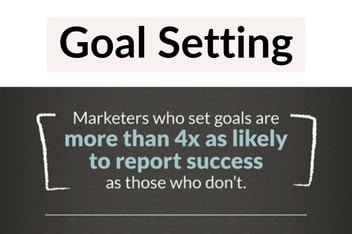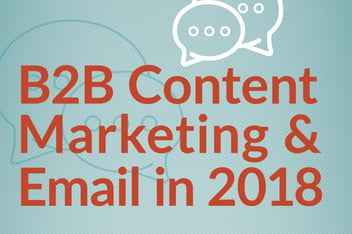5 Secrets for Using Audits to Uncover Marketing Mistakes, Develop Marketing Plan

Do you know what elements of your marketing strategy are succeeding, and which ones are failing to meet expectations? Do you know which channels bring in the most leads, and even more importantly, the most customers? Do you know where you need to fix problems that could be costing you money and results?
If the answer is “no,” it is time to conduct a marketing success audit.
Think of it this way:
When you are buying a house, you can look at it from the outside, and even do a walk-through, and think “It all looks good.” Roof is solid, carpets are new, and it has some cool technology features I like (like that whole-house audio system—sweet!).
But you still hire a home inspector to get down to fine details before signing the contract, right? Because what looks good on the surface could be hiding faulty wiring or mold in the attic — problems you want to fix because while they aren’t easily visible, they could cause big trouble down the road.
Think of marketing audits as a home inspection and appraisal for your inbound marketing strategies, campaigns and content. Marketing success audits are designed to find the marketing mistakes you are overlooking so they can be fixed, and to also highlight your most successful efforts so that they can be replicated in your new marketing plan.
Of course, just like that home inspection, marketing audits are only as good as the information you get from them AND how you use the information.
Here are our top 5 tips for making sure your “inspection” results in the outcome you deserve: a stronger marketing strategy for the future.
1. Make your marketing audits comprehensive.
A home inspection that just grazes the surface doesn’t do you any good, and neither does an audit that fails to take in the entire picture.
For marketing audits, “comprehensive” means not only looking at your own results, but also measuring how you are faring against the competition and how your message fits into the broader industry discussion. Think of it as examining comparable properties when getting an appraisal for that home you want to buy. Are you getting the same value as your competition?
As you—or an agency engaged to conduct the audit for you, providing an outside perspective—compare your performance to that of competitors in your market, look for opportunities to expand your reach and visibility. By considering the messaging being used in marketing and the media, you may identify topics that are being overlooked which could present opportunities for your company to command or even create the conversation.
With today’s changing technology and overlapping business structures, remember that your competitors might not only be others in your own industry. A great example can be found in our Audit Best Practices Case Study: Success Stories of National Brands. JONES helped a national auto manufacturer recognize that the evolving future of car ownership is pitting it against not only other car companies, but technology and service companies as well.
2. Go deeper than the numbers to include insights.
You would expect a home inspector to do more than give you a picture of mold in the attic; you would want them to tell you why it is there. In similar fashion, charts and graphs and impressive numbers may look great in a report, but the numbers by themselves are seldom useful. Don’t let an auditing agency get away with simply handing you a stack of statistics and data.
You hired them, or tasked your in-house staff, with going beyond data to interpret the data and present insights that come from a close and careful examination.
Knowing your overall lead generation numbers and website metrics isn’t enough. Your audit should dig deeper to identify which specific marketing tactics are most effective. You need to have a clear understanding of what content is converting visitors into leads and driving sales, and what content isn’t. (Find more about analyzing metrics and data in these resources from our Inbound Marketing Learning Library.)
3. Identify opportunities.
This may be one part of a marketing audit that doesn’t have a good home inspection analogy—oops. But it is still an essential part of your review of your marketing and public relations efforts and results.
Identifying opportunities means looking at what is NOT being said. You’ve inventoried the messaging and discussions coming from your brand, your competitors and industry influencers, now look at the list again and think about what is missing. Is there something customers are looking for or talking about that you and your peers haven’t caught on to yet?
An audit should uncover pain points or market opportunities that no one is reaching yet. (Click to Tweet) These might be updates in technology, changes in customer needs, or adaptations in related industries that present opportunities for your brand to lead the conversation from a public relations perspective.
On the marketing side, an audit should uncover whether you have the right content to reach every stage of the sales funnel and pinpoint opportunities to reach prospects, leads and customers at every point in their journey. Do you have the right content, delivered at the right time, for every stage of the buying process? If not, it’s time to start filling in those holes.
4. Insist on recommendations.
So, the home inspector has shown you a picture of the mold in the attic, told you why it’s there, now what? If you are still buying the house, you will want a recommendation for how to get rid of it, right?
It works the same for a marketing audit: you have the numbers and charts, your agency has shared its interpretation of what those numbers mean and what might be missing, now you need them to provide concrete recommendations about what you should do next to fix problems and capitalize on opportunities.
A media and public relations audit should include recommendations for topics and media outlets to target and ways of improving visibility and controlling the message. Expect a messaging and positioning audit to include recommendations for specific messaging to build brand recognition across all communications. Recommendations from a marketing content audit should identify specific campaigns and content to fill gaps in your current messaging. You could also request a HubSpot-certified agency to audit your use of HubSpot’s platform to determine areas you may be missing opportunities for lead capture and lead nurturing.
5. Share the information and strategy with other departments.
You now have data, interpretations, opportunities to address and recommendations for how to do so. Don’t keep it to yourself.
Regardless of who commissioned the audit—marketing, public relations, or even sales—the greatest benefit to the entire company comes when the information and the strategies developed from it are shared. Remember that the general public doesn’t differentiate between the messages that come from your PR team and those that are a product of the marketing strategy. It is important that everyone involved in communications, even customer service, present a consistent message about your brand.
Sharing the information and strategy across department lines, including to sales, customer service and others, will help align all of your efforts for greater overall success and provide the greatest ROI.
These five steps for maximizing the benefits of a marketing or messaging audit apply regardless of which specific audit approach you take. Check out our Media, Messaging and Marketing Audit Checklist for a complete look at the information you should expect an agency to provide for each of five different audit types. Or download our Audit Best Practices Case Study: Success Stories of National Brands to see these audits in action for five major national brands.
-1.png?width=1652&height=294&name=Jones(RGB)-1.png)












